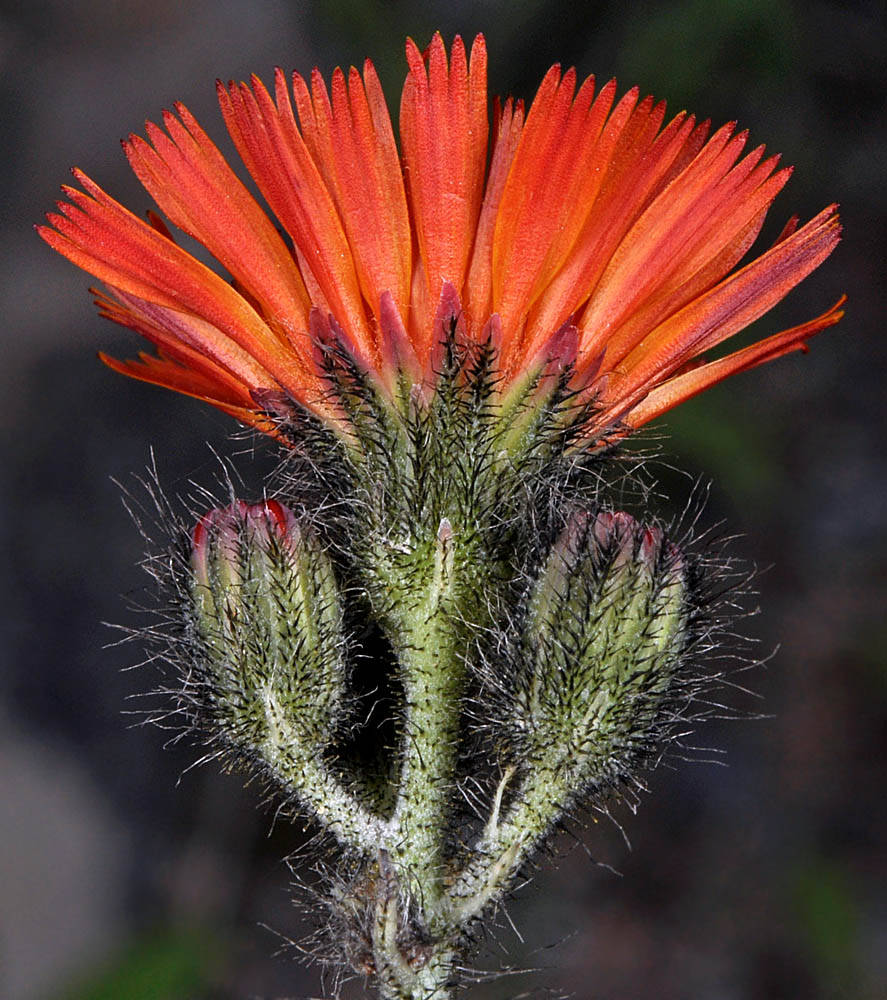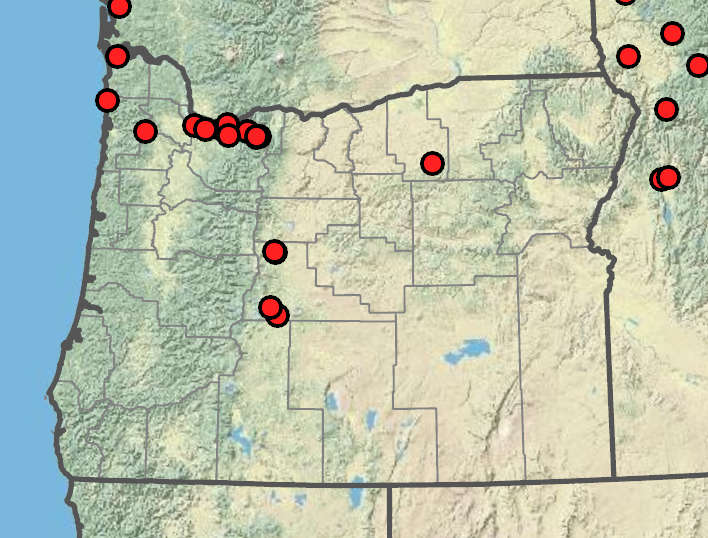Hieracium aurantiacum
Hieracium umbellatum
devil's paintbrush, king-devil, orange hawkweed
narrowleaf hawkweed, umbellate hawkweed
erect; simple, pilose-hispid, usually also stipitate-glandular, tomentulose distally.
usually simple or few-branched, glabrous or with villous; hispid, or puberulent hairs, sometimes puberulent distally.
basal, sometimes 1 near stem base, oblanceolate, 5–20 cm;
margins entire;
tips acute or obtuse;
surfaces pilose-setose;
petioles short, winged.
cauline, elliptic-lanceolate, 2–10 cm, reduced upwards;
margins entire or remotely denticulate;
surfaces hispid, sessile.
raceme- or panicle-like arrays, bracteate or not.
panicle- or raceme-like arrays, bracteate or not.
campanulate in flower; ovoid in fruit, 6–8 mm.
campanulate in flower, broadly ovoid in fruit, 8–12 mm.
25–100+;
ligules 10–15 mm; reddish orange, drying purplish.
30–80+;
ligules 15–20 mm, yellow.
linear-lanceolate;
surfaces blackish stipitate-glandular, usually setose-hispid; inner 13–30; outer > inner.
linear-lanceolate;
surfaces glabrous; inner 12–22+; outer gradually shorter.
columnar, 1.2–2 mm, dark brown.
columnar, 2–3 mm, dark brown.
=18, 27, 36, 45, 54, 63, 72.
=18, 27.
Hieracium aurantiacum
Hieracium umbellatum
Disturbed areas, roadsides, clearcuts, riverbanks, pastures. Flowering Jun–Aug. 100–1400 m. BW, Casc, CR, ECas. CA, ID, NV, WA; scattered in North America; Europe. Exotic.
Hieracium aurantiacum is a conspicuous and well-known weed over much of the United States and southern Canada. Its scattered distribution in Oregon indicates an ability to disperse by seed, and once established it may persist and spread by both seeds and stolons.
Disturbed areas, roadsides, forest edges, thickets, sandy areas. Flowering Jun–Sep. 200–1600 m. WV. WA; north to AK, northeast to Greenland, east to MA, southeast to WV; Asia, Europe. Native.
Kenton Chambers
Kenton Chambers
- Local floras:
BC,
OR,
WA
- Local Web sites:
Flora NW,
PNW Herbaria
WildflowerSearch
iNaturalist (observations)
USDA Plants Database
- LBJ Wildflower Center
- SEINet
- Plants of the World Online
- Encyclopedia of Life
- Wikipedia
- Google Image Search





